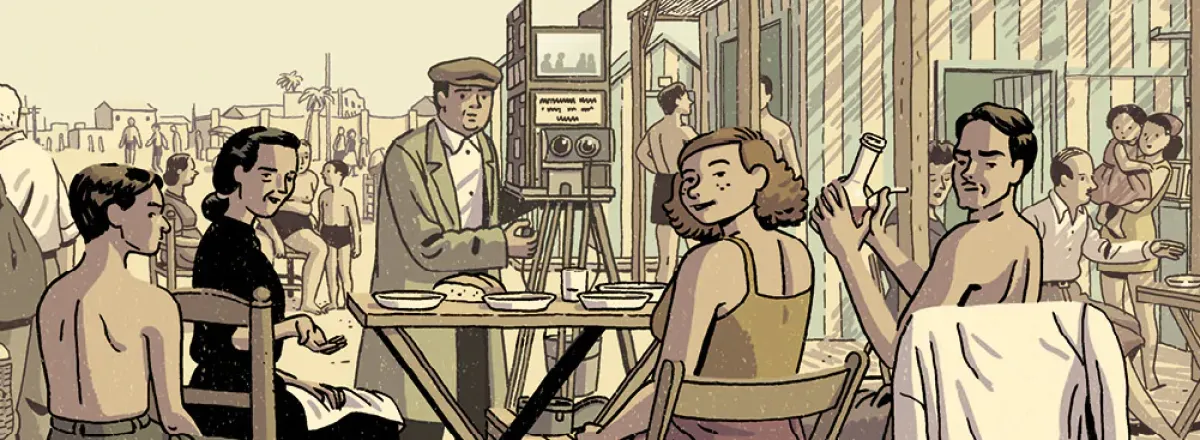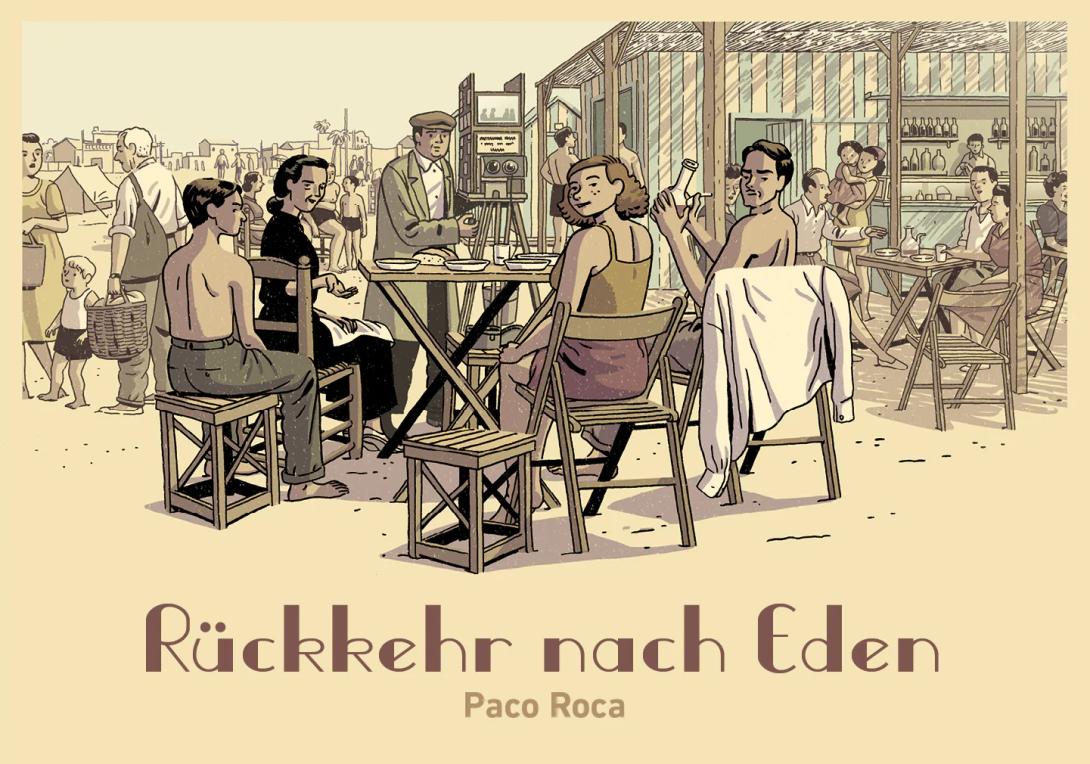What remains?

It begins with black pages. A slowly developing meditation on the fleeting nature of human existence in the face of the creation of the universe. And it is about the human rebellion against oblivion, against non-existence. One name is mentioned: Antonia. And under the biblical motto "And there was light", a situation emerges on the beach in Valencia, Spain, in 1946 ... a photograph.
 Reprodukt
ReproduktPaco Roca | Return to Eden | Reprodukt | 184 Seiten | 24 EUR
Paco Roca, born in Valencia in 1969, gently introduces us to a family history by showing photos, drawing an overview of the people and literally letting the reader look through the family's keyhole. He jumps through the ages, showing the old woman Antonia, who is looking for the beach photo from 1946 when she has to move house. When the picture is finally found, we also learn the story surrounding the photo, immersing us in post-war Spain and the worries of the family of Antonia, who was still a teenager at the time.
Unagitated, but never boring, the everyday life of the Franco dictatorship, characterized by poverty and lack of housing, unfolds, in which poverty was considered self-inflicted and - almost medieval - accepted as a God-given world order. Hunger thus becomes a daily companion for the young Antonia. The development of the city of Valencia is also depicted, such as the disappearance of the beach in the Nazareth district in favor of the expansion of the port.
However, Paco Roca is obviously more interested in Antonia's inner world than the political system of oppression, which is briefly outlined. After making his father the protagonist in "La Casa", it is now his mother that we get to know here. This is reminiscent of Pedro Almodóvar's films, such as "Parallel Mothers", which also approaches the history of Spain autobiographically and on a very personal level.
Antonia's childlike horizon is summarized in a wonderful little picture that shows a map of the biblical Garden of Eden, the beach in Valencia, Hollywood, China and King Kong. Everything is equally real for her. So the biblical story of the expulsion from paradise - told in her own colors - also claims real validity in Antonia's consciousness. As does her mother's story of Don Milán, a tightrope walker and sensational artist, who one day flies away in a balloon and never returns.
But the stories of the other family members are also told, clearly from the perspective of Antonia, who suffers under her strictly patriarchal father and has a lot of sympathy for her "disobedient" sister Amparín, who becomes pregnant out of wedlock at an early age.
The family narratives in muted shades of brown, black and sepia are stylistically unified, with simply drawn figures alongside inserted photos. Roca orients himself towards the French-Boelgian school with borrowings from Ligne Claire. The overall very simple, traditional picture layout, which "archives" the family history, also fits in with this. However, from time to time the levels of reality change seamlessly from the everyday to a poetic metaphor, for example when death appears as a grim reaper or Antonia's inner turmoil is symbolized by a volcano. Roca also finds a catchy image to depict his mother's loss of memory: When she thinks of her own mother as an old woman, her face is left blank. It has disappeared. This makes her desire to find the beach photograph with her mother again in order to give her a face in her memory all the more understandable.
This quiet graphic novel also ends in a wonderfully poetic way, telling such a touching story of a human life in which there is always, at least in the imagination, an inner retreat, a Garden of Eden.



